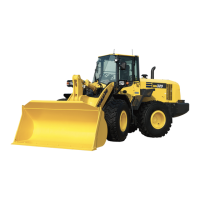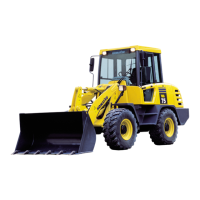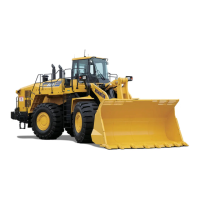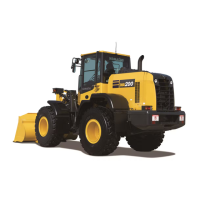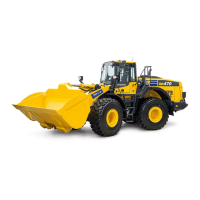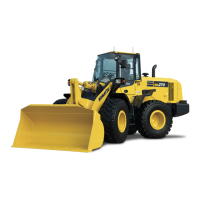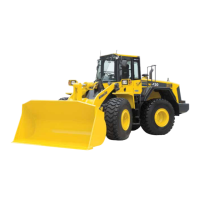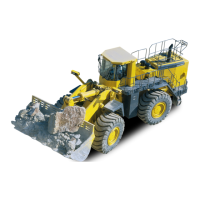OPERATION TRANSPORTATION
3-101
TRANSPORTATION 3
When transporting the machine, observe all related laws and regulations, and be careful to assure safety.
TRANSPORTATION PROCEDURE 3
As a basic rule, always transport the machine on a trailer.
When selecting the trailer, see the weights and dimensions given in Section “TECHNICAL DATA (5-2)“.
Note that the specifications for the weights and dimensions for transportation differ according to the type of tires
and type of bucket.
LOADING, UNLOADING WORK WITH TRAILERS 3
WARNING
q When loading or unloading the machine, run the engine at low speed, travel at low speed, and operate
slowly.
q When loading or unloading the machine, stop the trailer on firm level ground.
In addition, keep well away from the road shoulder.
q Use ramps of ample width, length, thickness, and strength, and install them securely at an angle of
less than 15°.
When using an embankment, compact the fill soil thoroughly and make sure that the slope face does
not collapse.
q Remove the mud stuck to the undercarriage to prevent the machine from slipping to the side on the
ramps.
In addition, remove any water, snow, ice, grease, or oil from the ramps.
q Never change direction on the ramps. There is danger that the machine may tip over.
If it is necessary to change direction, return to the ground surface or the trailer platform, correct the
direction, and start again.
q The position of the center of gravity of the machine will change suddenly at the connection of the
ramp and trailer, and there is danger of the machine losing its balance. Always drive slowly over this
point.
When loading or unloading, always use ramps or a platform and carry out the operation as follows.
LOADING 3
1. Load and unload on firm level ground only.
Maintain a safe distance from the edge of a road.

